Director’s Letter
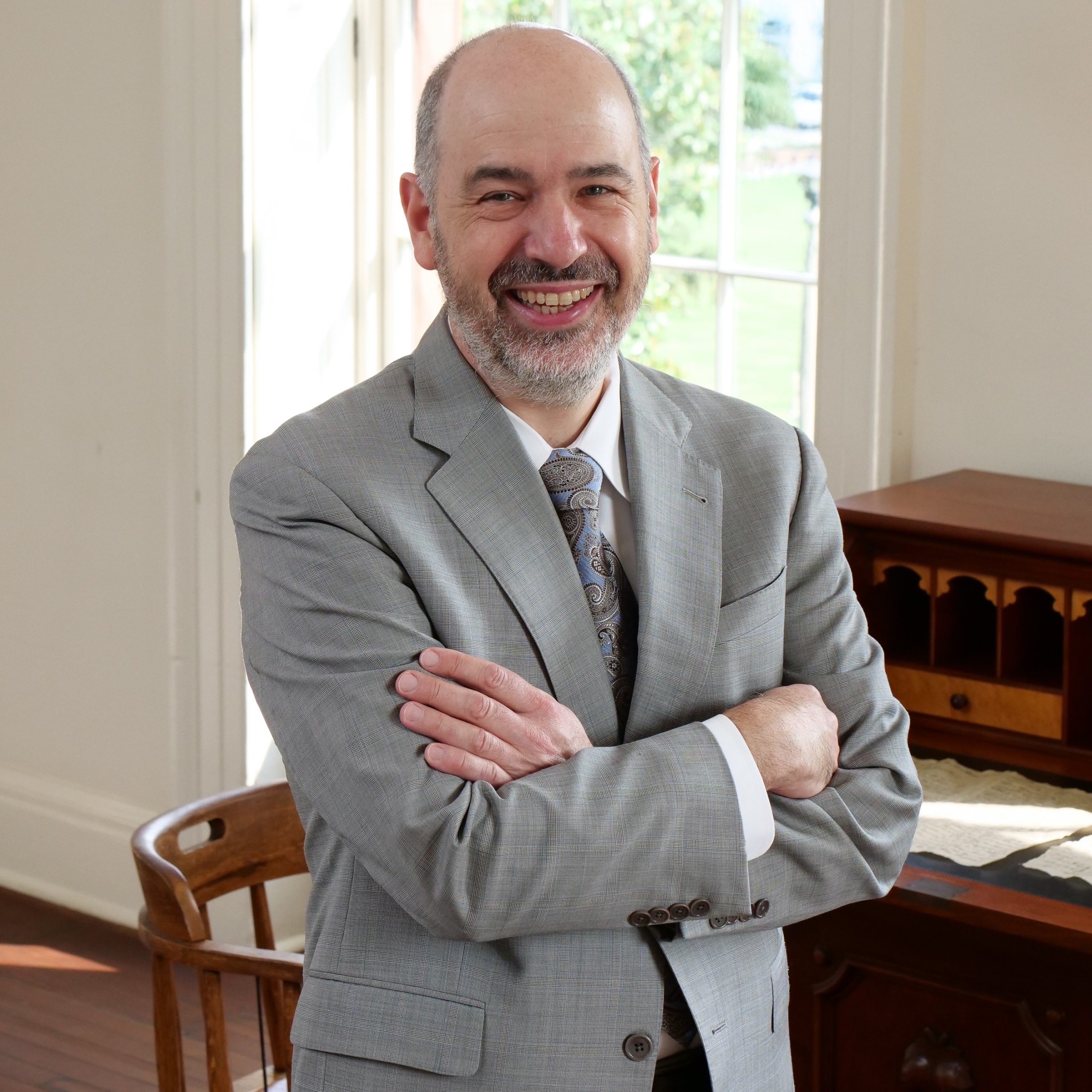
Dear Friends,
February is a busy time at President Lincoln’s Cottage, as we honor Black History Month and celebrate President’s Day. These commemorations provide us with the opportunity to reflect, and naturally my mind turns to the many qualities that made the sixteenth president such an extraordinary leader.
Experts speak of his adaptability, wit, and resilience, but one aspect of his character always stands out to me: Abraham Lincoln constantly asked people for their input and listened carefully to their responses. He welcomed everyday people into the White House for an hour each day, and he often stopped to speak to the African Americans who had fled enslavement and lived in the contraband camps along his route to the Cottage. Lincoln wanted to be in intimate contact with all people. He believed in their wisdom, and he made a practice of listening. As he said to a congressman friend, “Remember…stay close to the people; they are always right and will mislead no one.”
In recent weeks, the team at the Cottage team has begun to listen with renewed focus. Later this month, we will produce a Black History Month program that we developed with the residents of the Armed Forces Retirement Home. We will also host a first meeting of local community leaders in an open house to explore new opportunities for collaboration. These efforts are part of a new community engagement effort that builds on years of active conversation with our neighbors.
We would love to hear from you. Stop by or write, but share your thoughts about Lincoln, the Cottage, or the continued struggle for freedom.
MAM

Planning Lincoln’s Birthday Party with Jerry Jeffries
Jerry Jeffries is the Events Manager at President Lincoln’s Cottage. He constantly works to create meaningful, festive events for his clients. In anticipation of Lincoln’s birthday on February 12, we asked him to envision a birthday party for Abraham Lincoln and what he would do if he were planning the event.
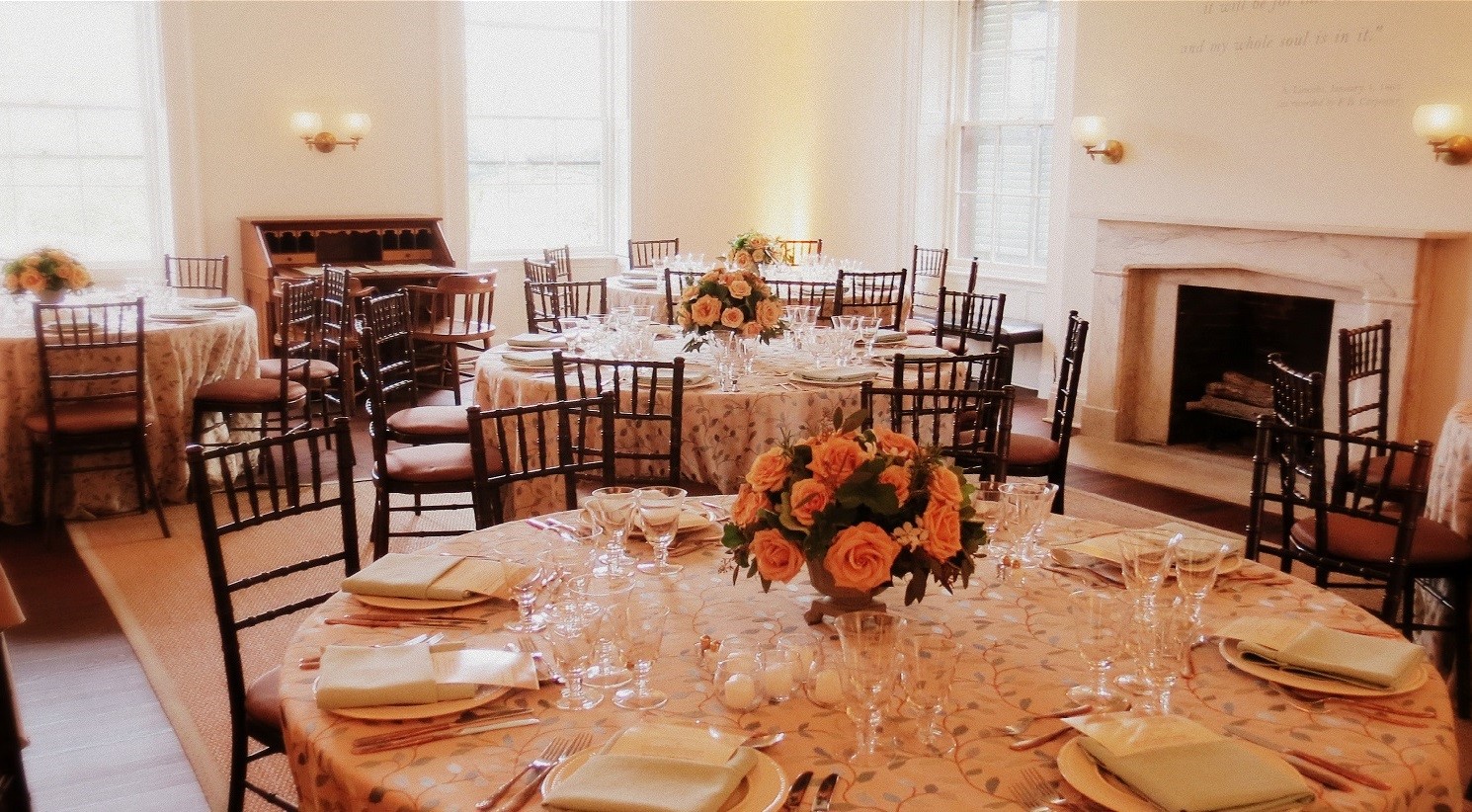
The first and best tip for any birthday celebration is to make it special and personal to the one that it is for. If I was planning Lincoln’s birthday, I would take into account Lincoln’s favorite memories from his childhood and make them ever present in the celebration while also paying tribute to his impressive achievements. I’m sure Mary, ever the gracious hostess, would do something similarly thoughtful.
As a child, Lincoln grew up sitting underneath trees reading, all the while delighting on a pocketful of Corn Dodgers made entirely of corn meal. While Mary grew up with cornbread with flour, Lincoln devoured the little slices of heaven and throughout his life enjoyed cornbread hot out of the oven. At the Soldier’s Home, there would be a variation that was later called Soldier’s Bread. I think the original Corn Dodgers would be a wonderful food to serve to evoke memories of a simpler life.
Also for a birthday treat for Lincoln, a favorite memory from childhood was the rare occasion of delighting over a few Gingerbread Men made from sorghum and fresh ginger. These were very rare occasions and when he would smell them in the air, he was the first one to rush through the door to get a taste. I would believe that in later years, when they were made, he and Tad would play a game of “soldiers” before devouring these treats. I would incorporate these as an after-dinner treat for the guests and a nod to Lincoln as a family man.
While the Lincoln’s did not partake in alcohol, on very special occasions Mary did allow for a champagne punch to be served. Knowing that political officials would be attending, I would arrange for this to be served sparingly to appropriate guests. Non-alcoholic beverages would be in plenty and gifts of wine and alcohol would be stored, boxed and later given to the military hospitals in the DC area for medicinal purposes… perhaps even by Mary herself, who was a frequent visitor to these hospitals during her stay in Washington.
The guest list would include political officials, local towns people – friends and of course, family… family meant the most to Lincoln. I would ensure that there would be a bounty of food both modest and fine. There would be a live band, as Lincoln loved music. Lincoln and his guests would no doubt indulge game of who could tell the best tale… and of course no one could beat Lincoln himself!
All in all, a celebration should be about the person, their spirit and those around them celebrating life. I would have worked with Mary to ensure that the décor was not too shabby but also not over-indulgent, that the guest list had the right balance and that everyone felt welcomed. That is the greatest tip for any celebration then and now!
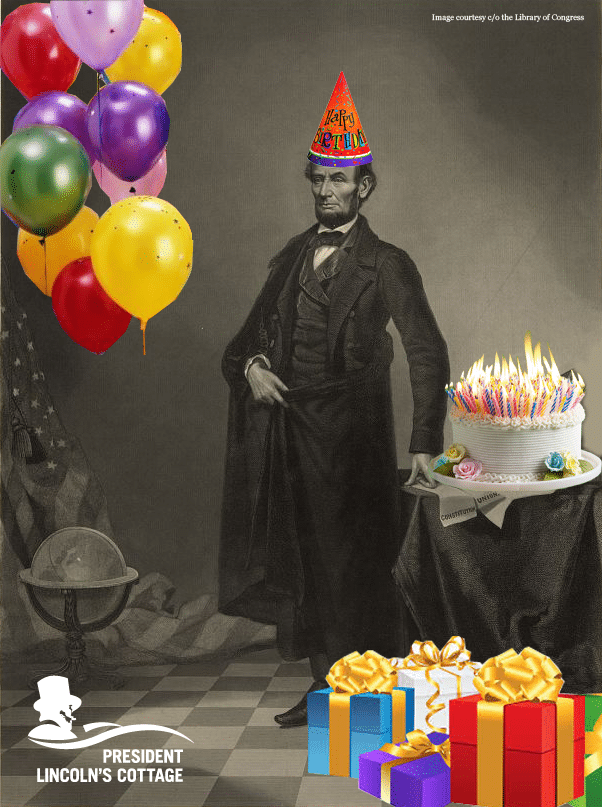
A Tale of Two Verandas: Part 2
By Jeff Larry
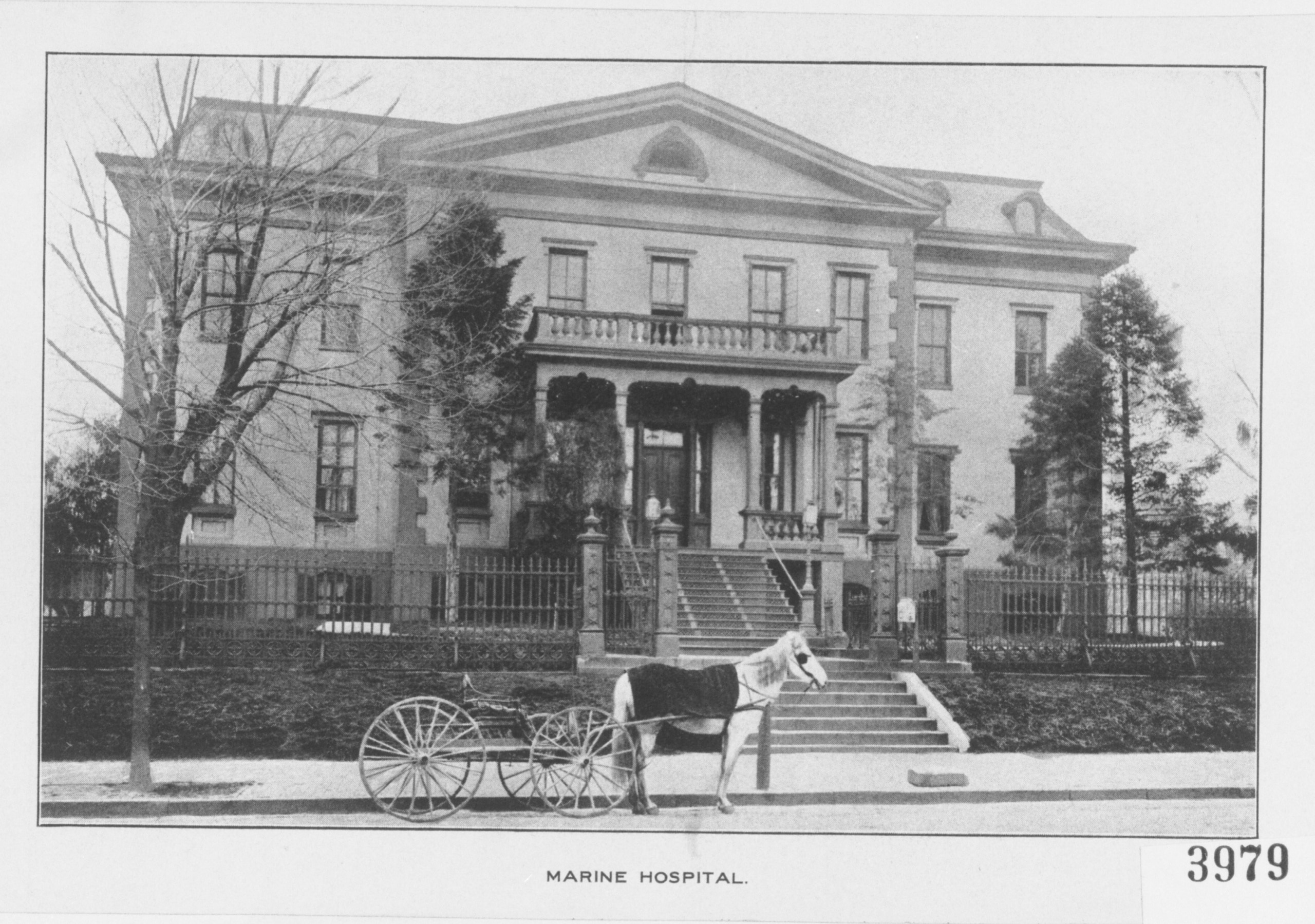
In part 1 of this story, I explored the history of the Cottage veranda and its connection to the veranda at the Old Naval Hospital. In this issue I will discuss the upcoming work on the Cottage veranda, and my return to the Old Naval Hospital (ONH) to see how its veranda has fared since it was restored in 2006. I will also explore some of the maintenance challenges and solutions that ONH, or any organization, may face when stewarding an historic building.
-
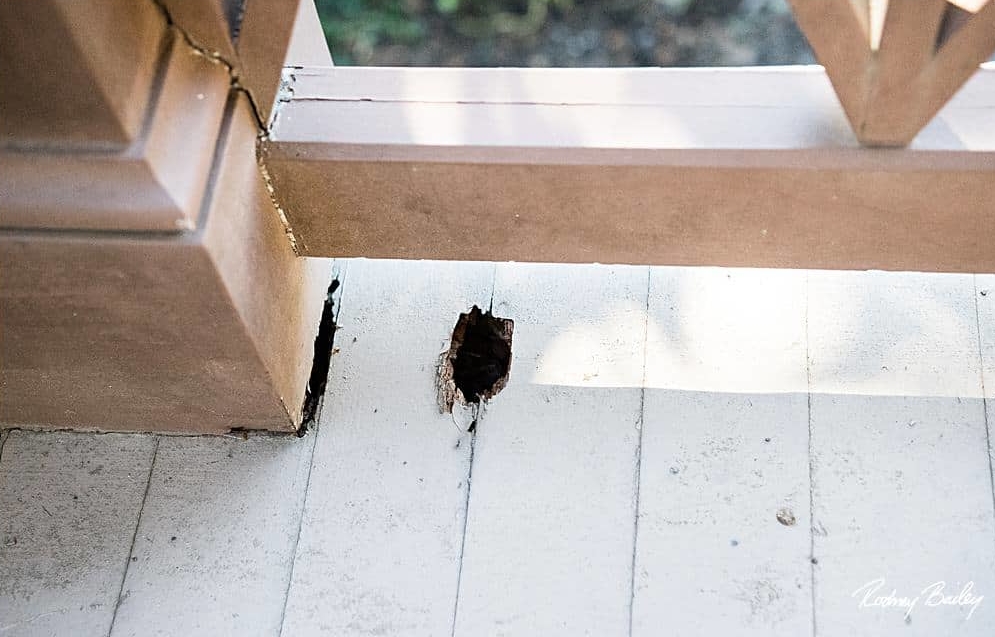
The first area of damage with the paint removed
And there it was. A little depression on the veranda floorboard about the size and shape of a Chesapeake Bay oyster.
“Oh that’s not good,” I thought. I had seen this before at the Cottage and it resulted in a total restoration of the west balcony. The recognizable depression on the floorboard was caused by the wood rotting away and the only thing hiding the deteriorated wood was a thin layer of beige paint.
Sometimes this type of deterioration is focused on one small area. It can be caused by a slight dip that catches water or plants growing on or too close to the building. And sometimes its systemic. I once used reclaimed red oak flooring on the screened-in porch of my Baltimore rowhouse.
I knew better, but it was inexpensive, and the little preservation devil perched on my shoulder had whispered, “Oh shush, it will be fine. Oak is really durable.”
The little preservation nerd on my other shoulder pushed up his cracked safety glasses and replied, “Um, well, red oak is actually very porous, and the end grain will suck up water faster than cotton socks in an old pair of shoes.”
“Oh pashaw”, the little preservation devil purred. “It will hardly ever get wet. Just paint the end grain. It will be fine.”
Three years later I had an entire colony of little Chesapeake Bay oyster depressions on my porch.

Line of damage beneath lower rail
Upon further inspection it became clear that the damage to the Cottage veranda flooring was not limited to the one area and was not systemic. Rather, it manifested in a pattern that ran directly beneath the lower rail of the east balustrade.

Temporary roof supports in place
How did this happen? There are no low areas to catch water and plants are always kept at least one foot away from the building. The flooring, installed in 2005, is mahogany; a lumber typically well suited for this application. Additional probes revealed that the deterioration had descended through the flooring and caused significant damage to the double joist that spanned the brick piers.

Deteriorated joist
What started as a perceived minor repair had expanded to a full 1/3 of the veranda! The decision was made to remove all the flooring so the remaining joists could be inspected and hopefully gain some insight into why the deterioration occurred. But before I began the Cottage project, I wanted to return to the ONH veranda and see how it had fared since completing the restoration in late 2006.
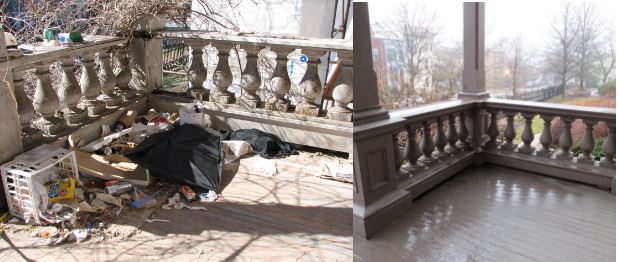
The ONH veranda prior to restoration in early 2006 and in February of 2022
It can be insightful to revisit one’s old projects, but I had no idea how it was going to look and the memories from that time had begun to roll in. It was my first big DC based project working with an architect and the city (oh my gosh, so much paperwork). I recalled my first site visit in April and though I hadn’t even been offered the job I knew I wanted it and was already plotting the way forward. The project had all the challenges one would expect; supporting a porch roof, lead paint, change orders and deadlines.
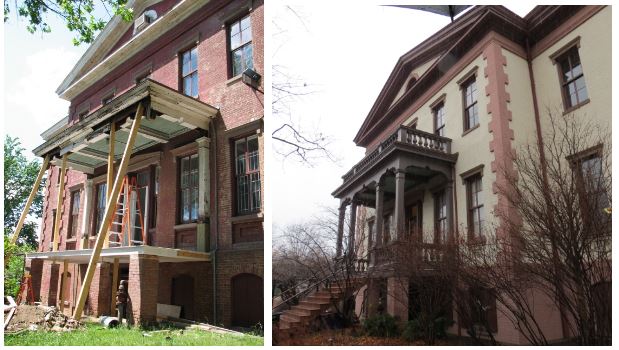
Roof supports in place in 2006 and how it looks today
And there was the time, after I had removed the temporary roof support but had not yet removed the stakes that had held the supports in place, that another contractor on the site hammered the stakes into the ground. Right through the gas line.
In the end it was a lot of fun (even if I only made about $2.54/hour) and I think we did something of value that became a small part of a larger project to create what is today The Hill Center, a non profit that “aims to broaden the horizons of all who enter by providing high-quality arts, education and cultural programs and other opportunities to engage more fully in the life of our city.” (Hillcenterdc.org)

2006 restoration in progress
So how did the veranda look on my first visit to ONH in over fifteen years?? What follows is not a disparagement upon the good folks that maintain the ONH but rather an acknowledgment that resources are often scarce, and one does the best they can with what they have and perhaps my observations can assist them as they continue their stewardship of the veranda.
What is the primary cause of deterioration in an old building? When asking the question to visitors on my preservation tours I usually respond quickly by saying, “children” (I can say that because I have two children). The real answer is water. This is followed, in no particular order, by neglect, fire, insects, and the actions of inexperienced and thoughtless contractors (oh boy, I could fill a book or two with that one).
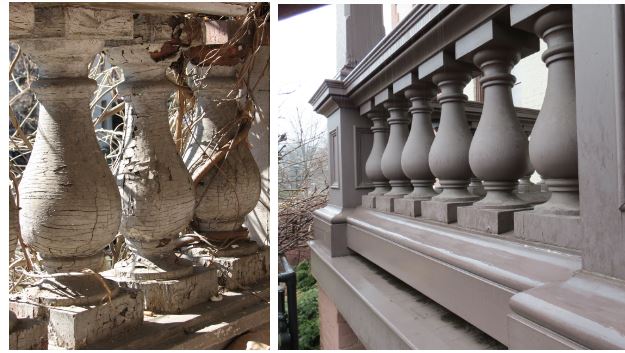
Damaged balusters prior to 2006 restoration and as they look now (note early signs of deterioration at base)
Water always finds a way but there are ways to mitigate its presence by taking steps to get the water away from the building. This can be a complicated endeavor especially when dealing with groundwater but for the purposes of this conversation let’s keep it simple with these three actions:
- The installation of gutters and downspouts. The veranda at ONH has what appears to be a properly functioning built-in gutter and downspout system but it is important that it is checked at least twice a year to ensure the downspouts are not blocked with leaves and other debris.
- Ensure building components are pitched to shed water. The ONH veranda was designed so all components are properly pitched but it is good practice to occasionally grab an umbrella and channel your inner Gene Kelly while watching where the water goes during a heavy rain. (singing is optional)
- Develop and follow a thorough maintenance plan. The development of a thorough maintenance plan is an invaluable endeavor that helps one understand the various components of a building and their unique needs. However, it’s just words on paper if the plan is not followed. A good plan should include an annual inspection of wooden components for signs of paint failure, deteriorated wood and open joints. The plan should also include solutions for dealing with all those issues before the problem is exacerbated.
There are numerous areas on the ONH veranda showing signs of paint failure, minor wood deterioration and open joints that could be addressed with minimal maintenance and two larger areas of concern on the southwest corner and at the top of the stairs.
In next month’s newsletter, I will complete the veranda trilogy by looking deeper into the causes of deterioration on both verandas and discuss possible solutions!
OUT NOW: The First Episode Q&Abe Season 4

Was Lincoln a racist? We explore this important question in Q&Abe episode 4.1 out February 10, 2022.
Along the way we pass through the Lincoln-Douglas debates, monumental controversies, the power of anger, and lost historical perspectives.
Listen and subscribe now:
SOS Application is now Live
Encourage the young activists in your life to apply for our 2022 Students Opposing Slavery (SOS) International Summit (June 26-July 1, 2022).
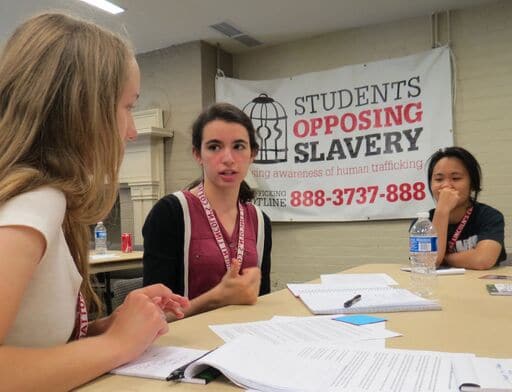
SOS is a program, developed by creative and motivated high school students, to continue Abraham Lincoln’s fight for freedom by addressing issues of modern slavery. Every year young activists from around the globe come together for a week-long summit where they tackle a problem facing contemporary abolitionists. In 2016, SOS received the Presidential Award for Extraordinary Efforts to Combat Trafficking in Persons. Read more.
Save the Date for our Lincoln Ideas Forum on Grief

Notable thinkers from a variety of fields will come together at President Lincoln’s Cottage for an exploration of grief on the anniversary of Lincoln’s last visit to the Cottage, April 13, the day before his assassination. The program is a compliment to our current exhibit, Reflections on Grief and Child Loss. The program will begin at 10am. Further details pending.
President Lincoln’s Cottage in the News
- Fox 5 News took a ‘Field Trip” to President Lincoln’s Cottage and conducted three interviews with members of our team, Michael Atwood Mason, Michelle Martz Easley, and Joan Cummins.
- NBC re-aired the episode of Roots Less Traveled, The Price of Freedom, part of which was filmed at and discusses the Cottage, on January 29.
SUPPORT PRESIDENT LINCOLN’S COTTAGE
Support our educational programs, preservation efforts and public events by making a contribution to President Lincoln’s Cottage. Donate online today.


